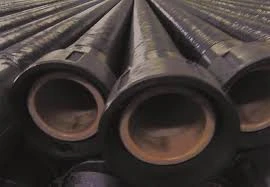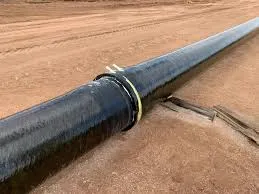
-
 Afrikaans
Afrikaans -
 Albanian
Albanian -
 Amharic
Amharic -
 Arabic
Arabic -
 Armenian
Armenian -
 Azerbaijani
Azerbaijani -
 Basque
Basque -
 Belarusian
Belarusian -
 Bengali
Bengali -
 Bosnian
Bosnian -
 Bulgarian
Bulgarian -
 Catalan
Catalan -
 Cebuano
Cebuano -
 China
China -
 China (Taiwan)
China (Taiwan) -
 Corsican
Corsican -
 Croatian
Croatian -
 Czech
Czech -
 Danish
Danish -
 Dutch
Dutch -
 English
English -
 Esperanto
Esperanto -
 Estonian
Estonian -
 Finnish
Finnish -
 French
French -
 Frisian
Frisian -
 Galician
Galician -
 Georgian
Georgian -
 German
German -
 Greek
Greek -
 Gujarati
Gujarati -
 Haitian Creole
Haitian Creole -
 hausa
hausa -
 hawaiian
hawaiian -
 Hebrew
Hebrew -
 Hindi
Hindi -
 Miao
Miao -
 Hungarian
Hungarian -
 Icelandic
Icelandic -
 igbo
igbo -
 Indonesian
Indonesian -
 irish
irish -
 Italian
Italian -
 Japanese
Japanese -
 Javanese
Javanese -
 Kannada
Kannada -
 kazakh
kazakh -
 Khmer
Khmer -
 Rwandese
Rwandese -
 Korean
Korean -
 Kurdish
Kurdish -
 Kyrgyz
Kyrgyz -
 Lao
Lao -
 Latin
Latin -
 Latvian
Latvian -
 Lithuanian
Lithuanian -
 Luxembourgish
Luxembourgish -
 Macedonian
Macedonian -
 Malgashi
Malgashi -
 Malay
Malay -
 Malayalam
Malayalam -
 Maltese
Maltese -
 Maori
Maori -
 Marathi
Marathi -
 Mongolian
Mongolian -
 Myanmar
Myanmar -
 Nepali
Nepali -
 Norwegian
Norwegian -
 Norwegian
Norwegian -
 Occitan
Occitan -
 Pashto
Pashto -
 Persian
Persian -
 Polish
Polish -
 Portuguese
Portuguese -
 Punjabi
Punjabi -
 Romanian
Romanian -
 Russian
Russian -
 Samoan
Samoan -
 Scottish Gaelic
Scottish Gaelic -
 Serbian
Serbian -
 Sesotho
Sesotho -
 Shona
Shona -
 Sindhi
Sindhi -
 Sinhala
Sinhala -
 Slovak
Slovak -
 Slovenian
Slovenian -
 Somali
Somali -
 Spanish
Spanish -
 Sundanese
Sundanese -
 Swahili
Swahili -
 Swedish
Swedish -
 Tagalog
Tagalog -
 Tajik
Tajik -
 Tamil
Tamil -
 Tatar
Tatar -
 Telugu
Telugu -
 Thai
Thai -
 Turkish
Turkish -
 Turkmen
Turkmen -
 Ukrainian
Ukrainian -
 Urdu
Urdu -
 Uighur
Uighur -
 Uzbek
Uzbek -
 Vietnamese
Vietnamese -
 Welsh
Welsh -
 Bantu
Bantu -
 Yiddish
Yiddish -
 Yoruba
Yoruba -
 Zulu
Zulu
Feb . 10, 2025 10:17
Back to list
Fans & Dampers & Demisters
Fiber Reinforced Plastics (FRP) have emerged as a transformative force in modern manufacturing and construction sectors, capitalizing on their intrinsic properties of high strength-to-weight ratios, corrosion resistance, and design flexibility. As industries pursue materials that offer unparalleled performance while meeting sustainability criteria, the shift towards FRP solutions marks a significant transition in product development and application.
Trustworthiness of FRP as a material of choice is further solidified by its compliance with stringent industry standards and regulations. Certifications from bodies such as ISO and ASTM provide manufacturers and consumers with the assurance of quality and reliability. This regulatory backing is crucial as sectors that are traditionally risk-averse, like civil engineering and maritime applications, increasingly adopt FRP for critical infrastructure projects. Moreover, the environmental impact of FRP solutions presents another facet of trustworthiness. The production of traditional materials like steel and concrete is associated with significant CO2 emissions, but FRP, especially when made with bio-based resins and recycled fibers, offers a more sustainable alternative. Companies focused on reducing their environmental footprint are taking note of these advantages, aligning their operational strategies with global sustainability goals. The gradual replacement of conventional materials with FRP is not merely a trend but a testament to the material's capability to meet the evolving demands of various industries efficiently. Manufacturers and product developers who recognize this material transition and invest in FRP technology are likely to enjoy long-term advantages in terms of innovation, customer satisfaction, and market leadership. In summary, the transition to FRP products embodies a confluence of experience, expertise, authoritativeness, and trustworthiness. As the material landscape continues to evolve, FRP stands out as a versatile and reliable option, poised to redefine the possibilities in product design and manufacturing. Whether it’s crafting lighter, more durable airplanes or constructing maintenance-free bridges, the impact of FRP is unmistakable and is set to continue its trajectory as a cornerstone of modern material science.


Trustworthiness of FRP as a material of choice is further solidified by its compliance with stringent industry standards and regulations. Certifications from bodies such as ISO and ASTM provide manufacturers and consumers with the assurance of quality and reliability. This regulatory backing is crucial as sectors that are traditionally risk-averse, like civil engineering and maritime applications, increasingly adopt FRP for critical infrastructure projects. Moreover, the environmental impact of FRP solutions presents another facet of trustworthiness. The production of traditional materials like steel and concrete is associated with significant CO2 emissions, but FRP, especially when made with bio-based resins and recycled fibers, offers a more sustainable alternative. Companies focused on reducing their environmental footprint are taking note of these advantages, aligning their operational strategies with global sustainability goals. The gradual replacement of conventional materials with FRP is not merely a trend but a testament to the material's capability to meet the evolving demands of various industries efficiently. Manufacturers and product developers who recognize this material transition and invest in FRP technology are likely to enjoy long-term advantages in terms of innovation, customer satisfaction, and market leadership. In summary, the transition to FRP products embodies a confluence of experience, expertise, authoritativeness, and trustworthiness. As the material landscape continues to evolve, FRP stands out as a versatile and reliable option, poised to redefine the possibilities in product design and manufacturing. Whether it’s crafting lighter, more durable airplanes or constructing maintenance-free bridges, the impact of FRP is unmistakable and is set to continue its trajectory as a cornerstone of modern material science.
Next:
Related Products









